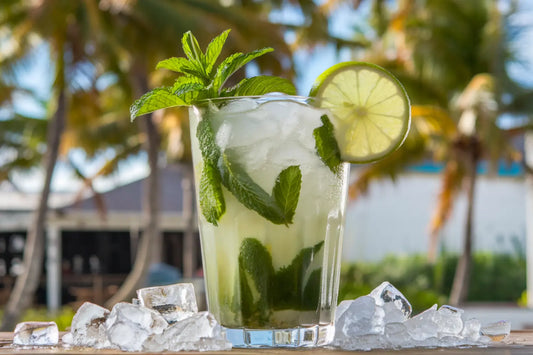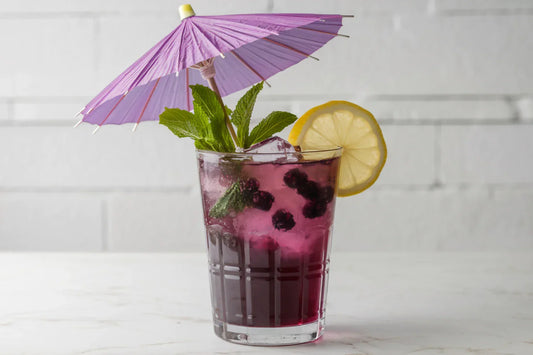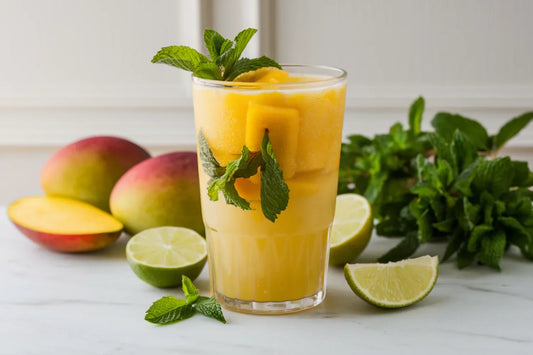What is a Jigger and Why You Absolutely Need One
BarNeedWhen you watch professional bartenders mix cocktails at the bar, do you ever wonder how they can create a delicious drink in such a short amount of time while maintaining both efficiency and taste? Is there some special trick they're using? Well, not exactly.
The secret to their speed and ability to craft perfectly balanced drinks lies in one small tool: the jigger. Today, let's dive into what it is and why you absolutely need one.
Jump to:
What is a Jigger?
A jigger is a bartending tool used to measure liquid ingredients, typically consisting of two different-sized measuring parts, shaped like an hourglass. That's why it’s also referred to as a "double jigger."
Common sizes for it include one side holding 1 oz (30 ml), and the other 1.5 oz (45 ml) or 2 oz (60 ml). The interior also includes various measurements, such as 1/2 oz (15 ml), 3/4 oz (22.5 ml), and 1 1/2 oz (45 ml), allowing for precise pouring.
Compared to using a teaspoon or a shot glass, the jigger's accuracy, ease of use, and efficiency make it an essential tool for bartenders. It not only improves efficiency but also ensures perfect cocktail ratios, resulting in a more balanced flavor. That’s why, whether you’re a professional or a cocktail enthusiast, a jigger is a must-have in your bartending kit.
History and Origins
The origin of the jigger dates back to the 19th century. At that time, bartenders needed a simple and efficient way to ensure the correct proportions of ingredients in each drink. As a result, the jigger's first iteration was simply a basic cup that provided rudimentary measurements.
By the late 19th and early 20th centuries, as cocktail culture began to rise, the double-sided version of the jigger emerged, designed to improve both efficiency and convenience in bartending. This structure made it easier for bartenders to measure different quantities, quickly becoming a must-have tool for every professional bartender. Today, it is widely used not only in commercial bars but also by home cocktail enthusiasts.
As for the origin of its name, there are two popular and plausible explanations:
- One theory suggests its name may be related to an old unit of measurement, possibly referring to a small quantity of alcohol, which later became associated with this tool.
- Another theory is that it may have originated from the word "jig," which eventually evolved into the name "jigger."
Styles of Jiggers
In terms of material, there isn't much variation—it's usually made of stainless steel, which is durable, rust-resistant, and easy to clean, making it well-suited for various bartending scenarios. When it comes to appearance, there are many styles, but the most common ones are as follows:
- Classic: This style is shorter and wider, typically with smaller capacities. The most common combinations are 1 oz (30 ml) and 1.5 oz (45 ml), or 0.5 oz (15 ml) and 1 oz (30 ml). Because of its limited capacity, it requires multiple pours to measure larger amounts, which has made it less popular over time.
- Japanese: The Japanese style is narrower and taller, making it easier to pour liquids without spillage. It also generally has larger capacity options, like 1 oz (30 ml) and 2 oz (60 ml). Thanks to its design, bartenders can measure and pour liquids more quickly and efficiently, making it the most favored style today.
- Bell: This style has a wider mouth and a bell-shaped design, giving it a unique aesthetic compared to the traditional cone-shaped jiggers. Its design makes it more comfortable to hold, and it's usually heavier than other styles, adding stability and making it less likely to tip over.
In addition to these main styles, there are other variations, such as with-handle, stepped, and single styles, though these are less common and generally cater to specific needs or preferences. If you're looking for efficiency and ease of use, the Japanese style is a great choice, while the bell style strikes a balance between visual appeal and functionality.

How to Use a Jigger
Using it is really simple—just keep it steady and control the speed at which you pour the liquid.
- Grip: Since it’s lightweight, you can hold it with your thumb and index finger, or between your index and middle fingers. The former tends to offer more stability, preventing slips. When holding it, make sure to keep it steady.
- Pouring In: When you’re filling the jigger, try to pour slowly to avoid spillage or overpouring. Once you’ve practiced a few times, you can speed up the process to improve efficiency.
- Pouring Out: When emptying the jigger, do so quickly and decisively to prevent liquid from dripping or flowing back down the sides.
With enough practice, you'll be able to control the amount by feel, making the process as smooth and effortless as a professional bartender.
Conclusion
The jigger is an excellent tool for easily crafting cocktails at home and recreating classic flavors. It offers convenience and accurate proportions, while also enhancing your professionalism and bringing you closer to expert bartenders. We hope this article has been helpful. If you have any cocktail-related questions or tips, feel free to share them with us in the comments section! Cheers!





